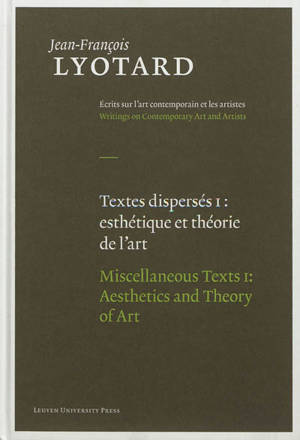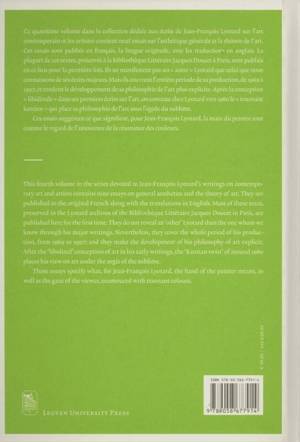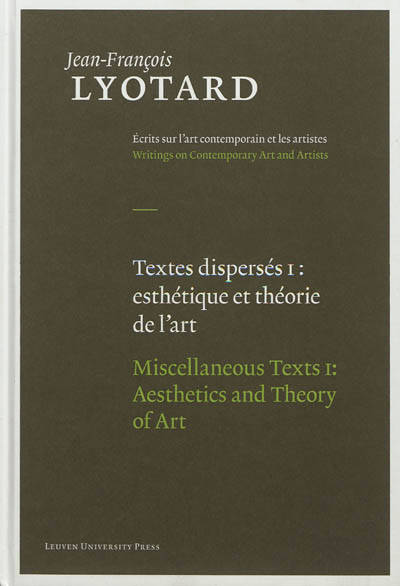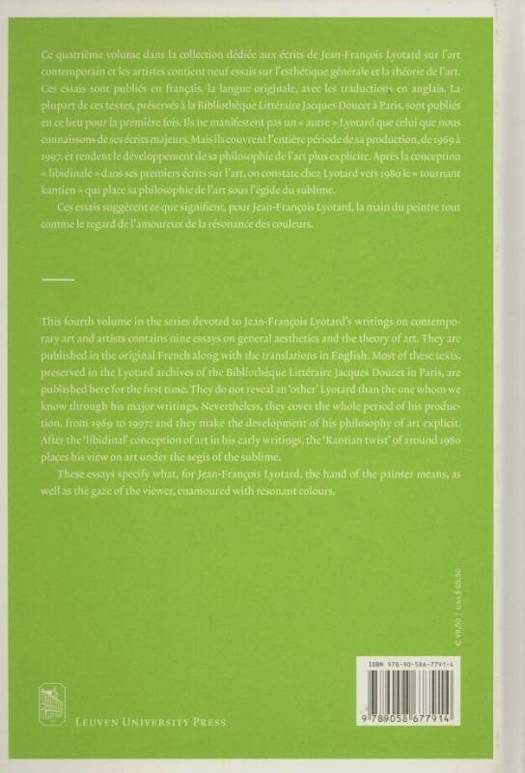
- Retrait gratuit dans votre magasin Club
- 7.000.000 titres dans notre catalogue
- Payer en toute sécurité
- Toujours un magasin près de chez vous
- Retrait gratuit dans votre magasin Club
- 7.000.0000 titres dans notre catalogue
- Payer en toute sécurité
- Toujours un magasin près de chez vous


Miscellaneous Texts, Volume I
Aesthetics and Theory of Art
Jean-François LyotardDescription
Ce quatrième volume dans la collection dédiée aux écrits de Jean-François Lyotard sur l'art contemporain et les artistes contient neuf essais sur l'esthétique générale et la théorie de l'art. Ces essais sont publiés en français, la langue originale, avec les traductions en anglais. La plupart de ces textes, préservés à la Bibliothèque Littéraire Jacques Doucet à Paris, sont publiés en ce lieu pour la première fois. Ils ne manifestent pas un « autre » Lyotard que celui que nous connaissons de ses écrits majeurs. Mais ils couvrent l'entière période de sa production, de 1969 à 1997, et rendent le développement de sa philosophie de l'art plus explicite. Après la conception « libidinale » dans ses premiers écrits sur l'art, on constate chez Lyotard vers 1980 le « tournant kantien » qui place sa philosophie de l'art sous l'égide du sublime.
Ces essais suggèrent ce que signifient, pour Jean-François Lyotard, la main du peintre tout comme le regard de l'amoureux de la résonance des couleurs.
This fourth volume in the series devoted to Jean-François Lyotard's writings on contemporary art and artists contains nine essays on general aesthetics and the theory of art. They are published in the original French along with the translations in English. Most of these texts, preserved in the Lyotard archives of the Bibliothèque Littéraire Jacques Doucet in Paris, are published here for the first time. They do not reveal an 'other' Lyotard than the one whom we know through his major writings. Nevertheless, they cover the whole period of his production, from 1969 to 1997 ; and they make the development of his philosophy of art explicit. After the 'libidinal' conception of art in his early writings, the 'Kantian twist' of around 1980 places his view on art under the aegis of the sublime.
These essays specify what, for Jean-François Lyotard, the hand of the painter means, as well as the gaze of the viewer, enamoured with resonant colours.
Spécifications
Parties prenantes
- Auteur(s) :
- Traducteur(s):
- Editeur:
Contenu
- Nombre de pages :
- 264
- Langue:
- Français, Anglais
- Collection :
- Tome:
- n° 1
Caractéristiques
- EAN:
- 9789058677914
- Date de parution :
- 15-07-12
- Format:
- Livre relié
- Format numérique:
- Genaaid
- Dimensions :
- 165 mm x 231 mm
- Poids :
- 612 g

Les avis
Nous publions uniquement les avis qui respectent les conditions requises. Consultez nos conditions pour les avis.







